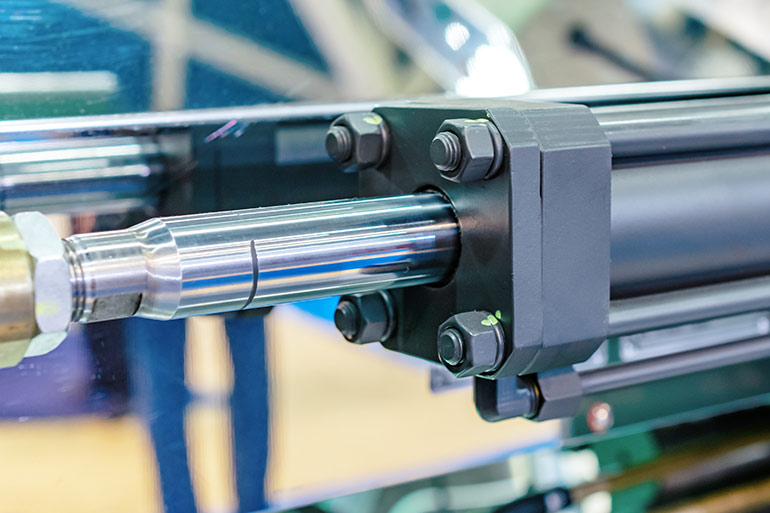By Josh Cosford, Contributing Editor
If your hydraulic cylinder is moving slowly and you’re reading this article, your cause is not likely a lazy operator. Your situation is obviously one where an expected performance isn’t being met, or there was a sudden and dramatic slowdown of your cylinder velocity. Diagnosing the cause of a cylinder slowdown requires a fundamental understanding of hydraulic principles, specifically, that pumped fluid must be going somewhere.

First, let’s rule out the pump; check that the motor is spinning, confirm that the drive couplers and insert are still intact, and then confirm that the pump is flowing. The latter may be confirmed by removing the hose or tube coming from the pump and directing it into a bucket or, better still, installing a flow meter right after the pump. Note, safely depressurize your system before removing the hose.
I’d like to preface the following few paragraphs on the assumption that your circuit is a relatively simple, open circuit and without various sources of pressure and flow, such as with large injection molding machines with multiple pumps and logic elements. Once you’ve confirmed the pump is flowing, accept that fluid is being diverted, for some reason, only partially to your cylinder. We need to find out where that fluid is going.
It sounds obvious, but check the machine for leaks. It’s possible that a leak somewhere between the pump and cylinder is bleeding away some fluid. After confirming that there are no external leaks, you want to check for internal leaks, which sounds difficult but is actually straightforward.
If the cylinder piston seals are leaking, the cylinder may move, albeit at a reduced rate, as some fluid bypasses the piston. Dead-head the cylinder, maintain pressure at the cap port, and then remove the rod side connection. If the fluid is bypassing the piston, you’ll see a constant stream of fluid exiting the port, elucidating the source of the leak. If you see only drops of oil, that’s nothing of concern. Try the experiment in reverse (don’t forget to connect the hose again), and see what happens.
If the cylinder seems fine, then let’s try other possibilities. Remember, we’re trying to find the path fluid is taking that avoids the cylinder. If your cylinder was dead-headed and the pump was still pumping, the next probable flow path is right through the relief valve. It could be partially stuck open, or perhaps was unintentionally adjusted to lower than factory setting. If load pressure is close to the relief valve setting, only a portion of the energy meant to move your load is directed to the cylinder.
The telltale signal that a relief valve is stuck open or poorly adjusted is the heat radiating during operation. Be careful not to touch the valve! Use an infrared or laser thermometer to measure on and around the valve, and if you measure significantly higher than what you measure at the reservoir, then you’ve found your culprit.
If nothing so far has explained your slow cylinder, the last item worth checking before bringing in a professional is the directional valve. Spool valves, especially, are prone to internal leakage, especially if years of excessive contamination have opened up the clearances between the spool and the body. Fluid intended for the cylinder may be bypassed to the tank port, so keep in mind that any fluid lost to leakage before performing useful work results in pure heat. Again, using your thermometer, measure the tank port of your valve and compare the result to what you measure at the reservoir. Should you find a significant jump in heat, service or replace your directional valve.
If none of the above options found your source of lost pump flow, and calling in a service technician is not in your budget, keep in mind the two points made above: pumped fluid must be going somewhere, and any fluid lost to leakage results in pure heat. Find that heat, and you’ve found the lost fluid causing your slow cylinder.
If your pneumatic cylinder is giving you trouble, read more about what can cause pneumatic cylinder failure now.
Filed Under: Components Oil Coolers, Cylinders & Actuators, Engineering Basics, Technologies